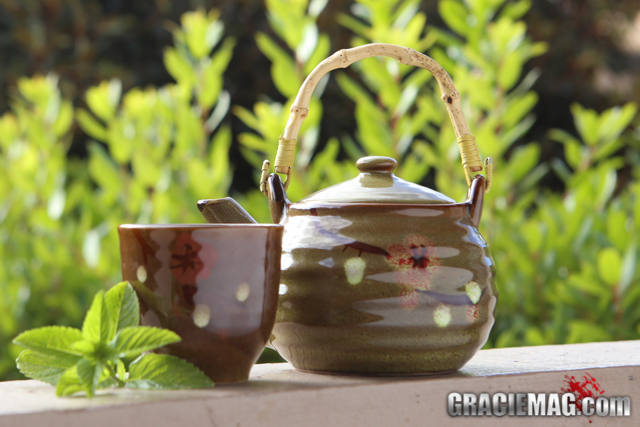
Peppermint tea
 Peppermint (Mentha piperita) is a noted digestive aid that stimulates the salivary glands, helps to eliminate nausea, eases heartburn, promotes burping, and calms stomach spasms and cramps.
Peppermint (Mentha piperita) is a noted digestive aid that stimulates the salivary glands, helps to eliminate nausea, eases heartburn, promotes burping, and calms stomach spasms and cramps.
Because of its action on the gastric lining, peppermint actually shortens the amount of time food spends in the stomach. This herb is traditionally used to cleanse and strengthen the entire body, including the heart muscle.
Because of its stimulating and warming properties, peppermint tea is a favorite old-time remedy for chills, colds, colic and rheumatism. It can even help relieve the nauseated feeling that often accompanies migraine or “sick” headache.
DESCRIPTION AND PARTS USED
Botanically speaking, peppermint is a hybrid that falls somewhere between spearmint and watermint. Most of the members of the mint family grow wild and like wet feet. Left on their own to choose their environment, these herbs favor the banks of brooks and streams or low damp meadows, but they do very well under cultivation as long as the soil is rich and moist. Of all the mints, peppermint is the most widely used. For the home-brewing of the peppermint tea. The leaves and flowering tops are used.
HISTORICAL NOTES
Medical prescriptions inscribed on old papyrus scrolls give evidence that peppermint has been used in Egypt since ancient times. As an effective medicinal and flavorful culinary herb, mint is in common use in both Middle Eastern and Asian lands today.
The benefits of peppermint have also been appreciated on Europe and Americas for long time. Peppermint has been listed in the United States Pharmacopoeia for more than 150 years.
SCIENTIFIC FINDS
Everyone is familiar with the taste of peppermint, so it shouldn’t come as a surprise to learn that herb contains menthol, along with volatile oils, menthone, methyl acetate, tannic acid, terpenes and vitamin C.
Is has been determined that oil of peppermint has very strong antispasmodic action. This property alone makes it valuable for relieving pains in the digestive tract, as well cramps in the abdomen.
Pharmacists often use peppermint in compound medicines because of its well-known ability to make disagreeable-tasting drugs palatable.
TRADITIONAL USE
Internal: To brew a flavorful cup of peppermint tea, use 1 heaping teaspoon (1/6oz or 4g) of dried herb parts to 8oz of freshly boiled water. Streep, strain and allow to cool. As a medicinal drink, peppermint tea is traditionally taken cold for the relief of nausea, headache, heartburn and flatulence.
External: Several sources claim that the bruised fresh leaves have a slight anesthetic effect. To relieve localized pain, pluck a few fresh leaves from peppermint thriving in your garden, crinkle them up, smooth them back out and apply to the affected area.
Peppermint is considered harmless and it may be used freely.
Source: Antol, MN. Healing Teas: How to prepare and use teas to maximize your health. Avery Ed. (1996) ISBN 0-89529-707-8.



